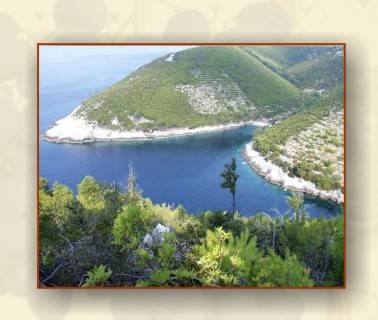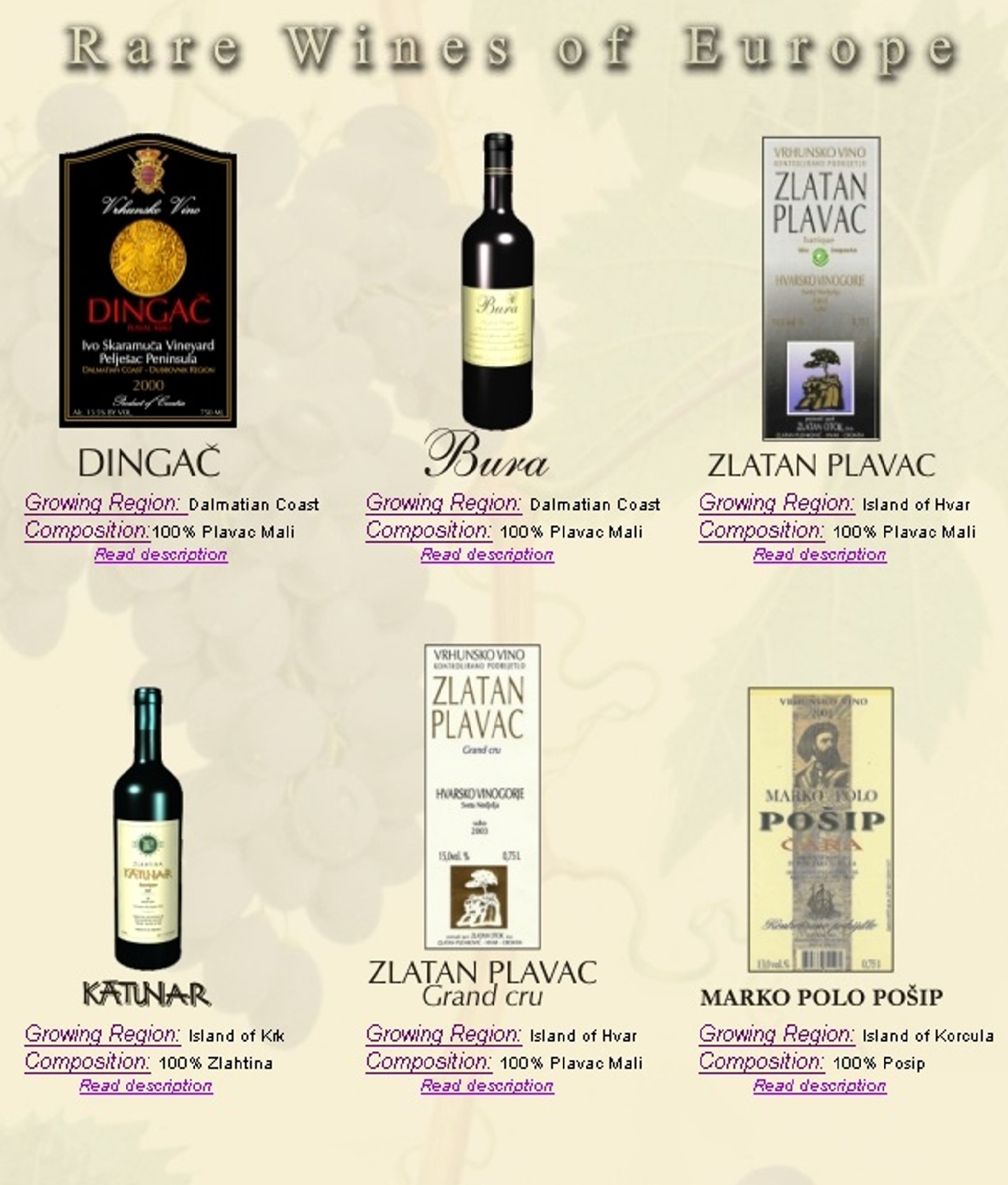Sampling Croatia
 Besides
outstanding cuisine, which may surprise the first time visitor,
Besides
outstanding cuisine, which may surprise the first time visitor,
Mediterranean Climate Ideal for Wine Making
The combination of
perfect climatic and geographic conditions has enabled the wine makers of
Korcula and Peljesac to cultivate and produce some of the worlds most
outstanding quality grapes.
The Mediterranean climate, with its long, hot, dry summers, mild, short windy
winters, frequent rain and abundant sunshine, produce wines rich in dry extract
and alcohol.
Recent analysis states that all
scientific evidence to date points to Croatia as the origin and birthplace of
Zinfandel. Historical records testify the existence of Zinfandel on the
Dalmatian soil since 183 BC. Using DNA profiling techniques, scientists
recently discovered that Zinfandel and an indigenous Croatian grape called
Crljenak are one and the same. DNA analysis also helped establish a
definite close relationship between modern Italian Primitivo, Croatian Plavac

Dingac
Dingac wine is made from
the indigenous Plavac
(3,000 cases made each year)
Zlatan Plavac
The
Dalmatian
(2000
cases made each year)
Grand Cru
Only
the best “first press” juice is used to produce this outstanding plavac
(300
cases made each year)
The Dalmatian Wine Making Tradition
Illyric Tribes were the first Dalmatian wine makers 3,800 years ago.
390 BC – Wine growing tradition is developed during the Greek Colonization.
339 BC –
4th Century – Recognition of Christianity. The Church develops its expertise
in winemaking.
1400 – First laws on wine production and quality control are written in
1797 – Before the fall of
1870 – Filoxera destroys vineyards in
1875 – 1900
1920 – 1940 Wine production reduces to 18 million gallons after
Austro-Hungarian Empire begins importing Italian wines.
1945 – Beginning of Communist regime, collectivization of land destroys the
wine industry.
1991 –
1997 – Croatian wine makers produce 620 various kinds of wine from 54 sorts of
grapes.


Information and tips for finding end enjoying everyday wines from Europe and other major wine regions:
Search the Blogs
Copyright WineNews.com 2009

